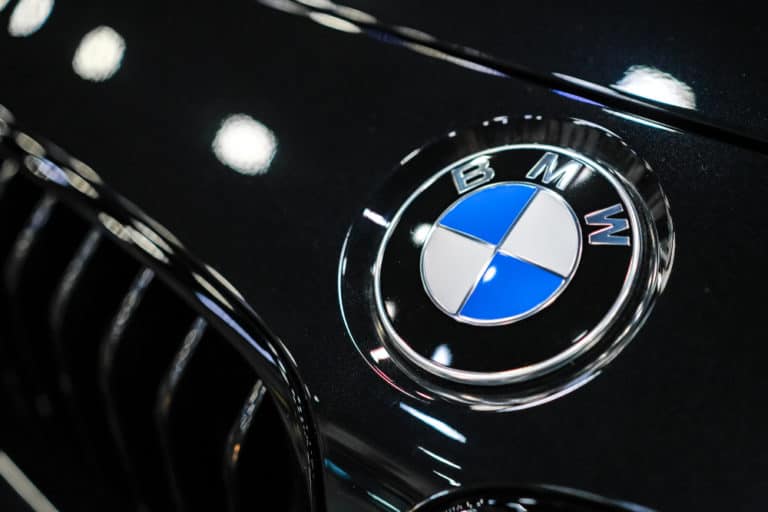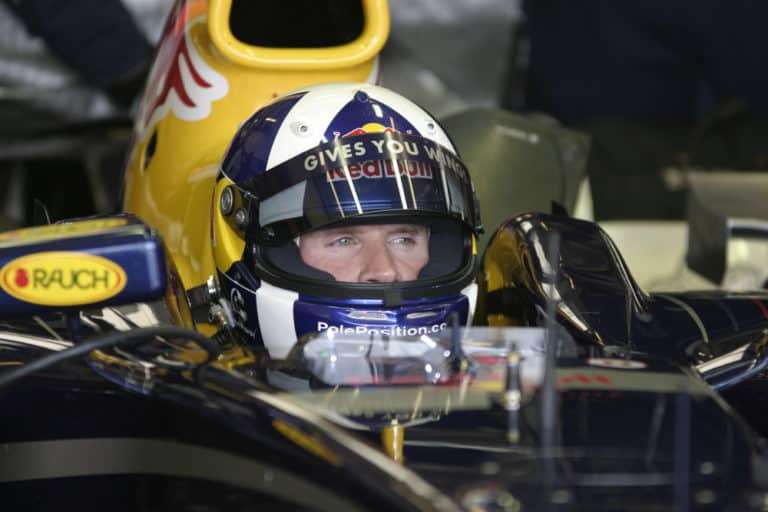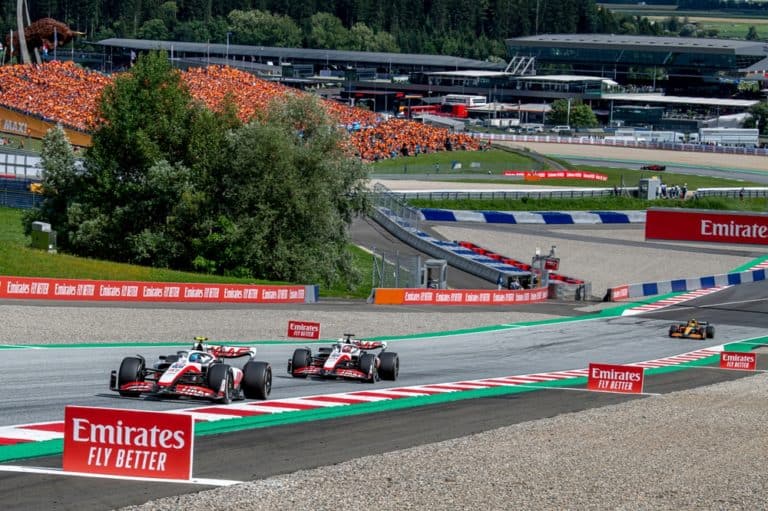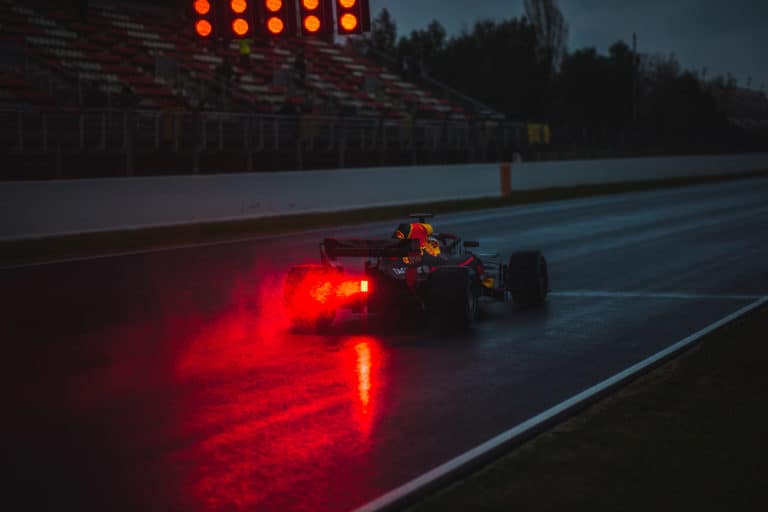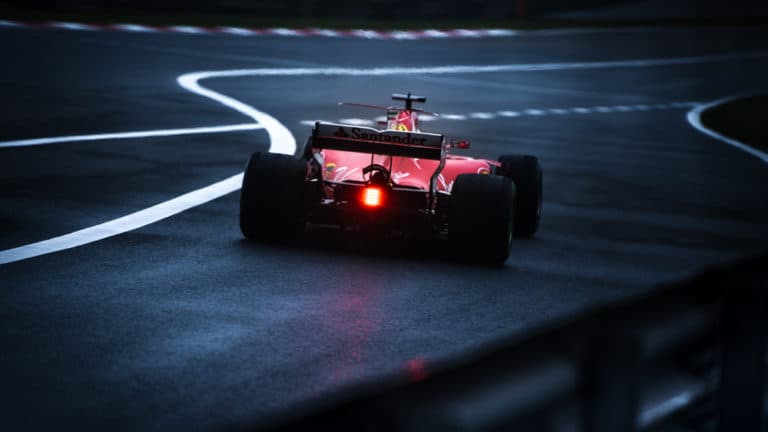When most motorsports are experiencing a declining audience size, Formula One has maintained its appeal and significantly increased its viewership. It has done this by growing its international appeal, constantly changing the car designs to achieve more competitive racing, and keeping the qualifying sessions as exciting as possible.
In a conventional format weekend, the qualifying process arts with Free practice sessions on Friday and Saturday. These are followed by three qualifying sessions on Saturday in which cars are progressively eliminated until Q3 when the ten fastest drivers battle for the quickest time.
The Formula One management has made great efforts to keep the interest alive through the Free Practise and Qualifying sessions on Friday and Saturday. To this end, they have also added the Sprint qualifying style to the mix, which means there are effectively two races, one on Saturday and the main one on Sunday.
If you’re looking for some F1 merchandise, check out the awesome stuff at the official F1 store here.
The F1 Qualifying Process
Every team’s activity over a race weekend is geared toward a competitive Grand Prix on Sunday.
The teams work through three practice sessions and three qualifying sessions in the normal format to prepare and secure the optimum position on the starting grid.
A new qualifying format was tested in 2021 and was incorporated in 2022. It is called the sprint race format and involves the teams.
The sprint format entails two practice sessions.
- The first (FP1) is held on Friday at +-12h00 and is followed by two qualifying sessions in the afternoon.
- The second is held on Saturday morning, with the qualifying sprint happening later in the day.
The normal Format Qualifying session
The process involves the sessions on Friday and Saturday preceding the grand event on Sunday on a normal qualifying weekend.
A weekend in which the qualifying sessions are conducted normally (i.e., not the sprint qualifying) consists of three practice sessions and three qualifying sessions.
The first two practice sessions are conducted on Friday.
The third practice session and the three qualifying sessions are conducted on Saturday.
Free Practice Session One (FP1)
Some races happen back-to-back to each other. It means that the races follow each other on sequential weekends.
In these instances, the cars are disassembled (normally within eight hours) on Sunday, loaded and transported to the next venue, and reassembled in time for the Friday practice session.
With so much work having been done on the car, FP1 is a very important test.
The first lap of FP1 is called the installation lap and is an opportunity for the driver and engineer to ensure that everything went back together with no issues.
The teams are only allowed to test the car, and any modifications at the track during officially mandated testing periods. It restricts the team from testing new modifications during the relatively short practice sessions.
Because of this, the teams often use FP1 to test any new aero devices or other test units. While these will have been extensively tested in the wind tunnels back at the factory, this is the opportunity to try them in real-world conditions.
As these new parts are unproven, they are tested thoroughly before being used on the car when lap times are critical.
The teams start with a session with a controlled lap, using the unmodified car to establish speeds, cornering ability, and overall lap times.
The Formula One car is returned to the garage, and the modifications are installed.
The driver (sometimes a dedicated test driver) will take the car out on the track and drive the vehicle as identically as possible as the first control lap.
After each testing period, the cars are taken back into the garage, the covers are removed, and test data is scrutinized.
The performance, driveability, and lap times are compared with the control lap. If there is no improvement or regression, the teams will remove the upgrades and revert the car to the previous configuration.
If it is a new circuit, such as in the recent Miami F1 Grand Prix, the drivers will use a few laps to become acquainted with the different sections.
They will also look for the optimal driving line without exceeding the track limits.
Free Practice Session Town (FP2)
While FP1 is used to set the car up, test new modifications, and let the driver become acquainted with the track, FP2 is used to finetune the vehicle for the actual race on Sunday.
The cars are sent out on track for varying length sessions. In the end, the vehicle returns to the garage, and performance data is analyzed.
The cars may be adjusted between each sessions. The drivers are then told which areas to concentrate on and are sent back out again.
The whole purpose is to make the car as fast as possible with the optimum setup for the varying conditions and tires used in qualifying and, ultimately, the main grand Prix.
When the car is out on the track, digital recorders constantly write data (including maximum speeds, braking efficiency, cornering performances, and others) to memory. As the car passes the pit lane, the system automatically uploads the data to the team’s computer equipment.
It gives the teams an in-depth understanding of how the car performs and lets them assess which areas need further finetuning before the driver returns to the garage.
With the data and the drivers on the spit feedback, the engineers can adjust the suspension geometries and/or aerodynamic setup.
While minor adjustments are normally made during the session, if needed, In between FP1, FP2, and FP3, the engineers can make more substantive changes as required.
As each track has different characteristics, not only with the circuit layout but allow with the track surface layer and the heat at the location, the teams use FP1 and FP2 to monitor fuel consumption, engine temperatures, and tire wear.
Cars have to be run for longer sessions to verify the setup needed for when the tires are fresh, and the racing car is heavily laden with fuel instead of later in the race when fuel levels are lower (and therefore lighter), and the tires are not in optimal condition.
The optimal operating window for the tires is within certain heat bands.
The ideal situation would be for the tires to heat up quickly and then stay at the optimal temperature for the whole race. All of the variables mean that there is rarely a perfect set of conditions. So the teams must understand which is the most suitable tire is to run in the different sessions and how long they can be expected to last in race conditions.
The teams have very advanced simulation algorithms that help them predict the degradation rates and the tire optimal tire strategy for the upcoming race.
Free Practise Session Three (FP3)
While FP1 and FP2 concentrate on setting the car up correctly, testing new devices, and understanding degradation rates, FP3 is used to work out the best qualifying strategy to apply.
The decisions during FP3 include
Whether The Best Lap Will Be Achieved With A “Tow”
They will decide whether it is optimal to obtain an aerodynamic tow from the front (which will help them decide when is the optimal moment to release it from the pit).
Teams will work out the optimal release time at the tracks where a “tow” is an advantage.
The opposite may be true, and too many cars leaving the pits together cause a traffic jam. FP3 helps the teams understand how the jams occur and when the best time is to release the drivers to avoid them.
The Fuel Quantity Needed
They will also use FP3 to calculate the minimum amount of fuel (to keep the car as light as possible) needed to run the car in the different qualifying laps.
The Optimal Tires
The difference in tire performance is related directly back to the tire used in a session.
While the softest compound available normally achieves the best lap time, the teams only have a specific allowance available for the weekend.
Therefore, it would be impractical to use the soft tire for each qualifying session.
Number Of Qualifying Laps
One of the most important variables F1 teams have to contend with is the track condition.
It is not only the F1 car’s tires that change temperatures during a session but also the track itself. In addition, the more F1 cars that race around the track, the more tire rubber deposited into the surface.
As the track heats up and rubber is deposited, it improves tractability until a specific point where it may heat up too much.
FP3 helps the teams decide how many runs to do in each session.
Park Ferme
Once the practice sessions are over and the teams start qualifying, the cars go into a condition called Parc Ferme.
The ten fastest cars that made it to Q3 are sent to the scrutineering bay, where they are checked to ensure they don’t fall foul of the regulations.
They are then returned to the teams’ garages, where an FIA member is deployed to ensure that Park Ferme conditions are maintained.
It is a French term, and the direct translation into English Park Ferme is “Park Farm.” It indicates that the cars must run the main race in the same configuration during the main Grand Prix.
While teams can
- Start the engines.
- Remove and refill fuel.
- Testing the vehicle’s electronics.
- Bleed the brakes.
- Draining fluids.
- And even remove bodywork and change the front wing angle.
- Teams can even rebuild a damaged car (albeit with penalties being incurred).
The cars cannot have any performance or handling upgrades until after the main race.
Qualifying Session One (Q1)
The qualifying sessions start in the afternoon, last for an hour, and are split into three parts, namely Q1, Q2, and Q3.
Q1 starts with 20 cars running qualifying sessions, and the session lasts for eighteen minutes.
Generally, each team will make two attempts to ensure they stay in contention for the next session.
Each attempt will involve running three circuits around the track. The reasons for these circuits are.
- The out lap is run at a slower speed, and its purpose is to get the tires and brakes up to optimum temperature. The driver focuses on exiting out of the final corner before crossing the start line as fast as possible to start the high-speed lap with as much speed as possible.
- The actual high-speed lap is run once the temperatures have been reached.
- The in lap is a “slowing down ” lap used to cool the car down and return to the pits.
At the end of each session, a chequered flag is waved. Any drivers who have passed the start line before the flag is waved are permitted to carry in with their lap; however, drivers who have not reached the line have to pit.
The five slowest cars are eliminated at the end of Q1.
The slowest five cars will be placed in positions 16 – 20 (according to their ranking on the timesheet) on the starting grid for the Grand Prix on the following day.
Qualifying Session Two (Q2)
After a seven-minute rest, the fastest fifteen teams run in Q2 lasts for fifteen minutes.
Once again, they tend only to make two attempts, and as in Q1, at the end of the session, the five slowest cars are eliminated.
The slowest five cars will be placed in positions 11- 15 (according to their ranking on the timesheet) on the starting grid for the Grand Prix on the following day.
In Q1 and Q2, the goal is not necessarily to break any lap records but rather to ensure they are faster than the slowest five teams.
Qualifying Session Three (Q3)
After a short seven-minute break, the final qualifying session (Q3) starts, which lasts for ten minutes.
The ten fastest cars are normally sent out on a new set of tires for FP3.
The ten-minute Q3 session is the culmination of all three Free Practice sessions and the two previous qualifying sessions. Get it right, and the fastest drivers will be at the front of the Sunday Grand Prix grid and will have the greatest strategic advantage to do well in the main race.
In previous years, the teams that got to FP3 were required to start the Grand Prix on the tires they achieved the fastest lap time on in FP2. The FIA removed this rule in 2022.
Due to the short time available, the teams will run only two sessions.
The first Q3 laps they run will generally be fast but not quite on edge. It is known as the “banker” lap. It is run to ensure a relatively safest position should there be an interruption due to a problem on the track.
It is also set down because the second attempt will be run at maximum speeds and right on the edge of the car’s capabilities. If they make a mistake, at least they have the “banker” lap time to fall back on.
The second lap is normally the fastest and when track records (if possible) are broken.
It doesn’t matter how fast the driver was in Q1 and Q2; if they don’t achieve their target time in Q3, they will be severely compromised.
Apart from any drivers who have incurred penalties, the qualifying sessions will determine their starting grid position.
Drivers who have incurred penalties will have their grid positions moved backward according to the size of the penalty.
Penalties can be issued under the following conditions.
- The driver impeded another car’s progress.
- The driver committed a safety violation.
- The driver did not comply with the yellow flag (light) or a marshal’s instructions.
- The driver entered or dangerously left the pit lane.
Sprint Format Qualifying Session
In 2021 and 2022, the FIA tested a new qualifying format. The purpose of which was to increase the viewer’s excitement.
The new format involves running the FP1 session on Friday morning.
The Q1, Q2, and Q3 sessions are run on Friday afternoon and decide the starting grid for the Sprint session.
FP2 is run on Saturday morning.
The sprint race is run on Saturday afternoon. The FIA defines the sprint race distance as “the least number of complete laps which exceed 100 km.”
It is intended to be a very fast sprint run from the start to the end with no pit stops – unless necessary.
In 2022, The sprint races will be held at the following Grands Prix:
- Emilia Romagna Grand Prix at Imola.
- The Austrian Grand Prix at the Red Bull Ring.
- Sao Paulo Grand Prix at Interlagos.
The finishing order in the sprint race will determine the starting order for the main Sunday Grand Prix.
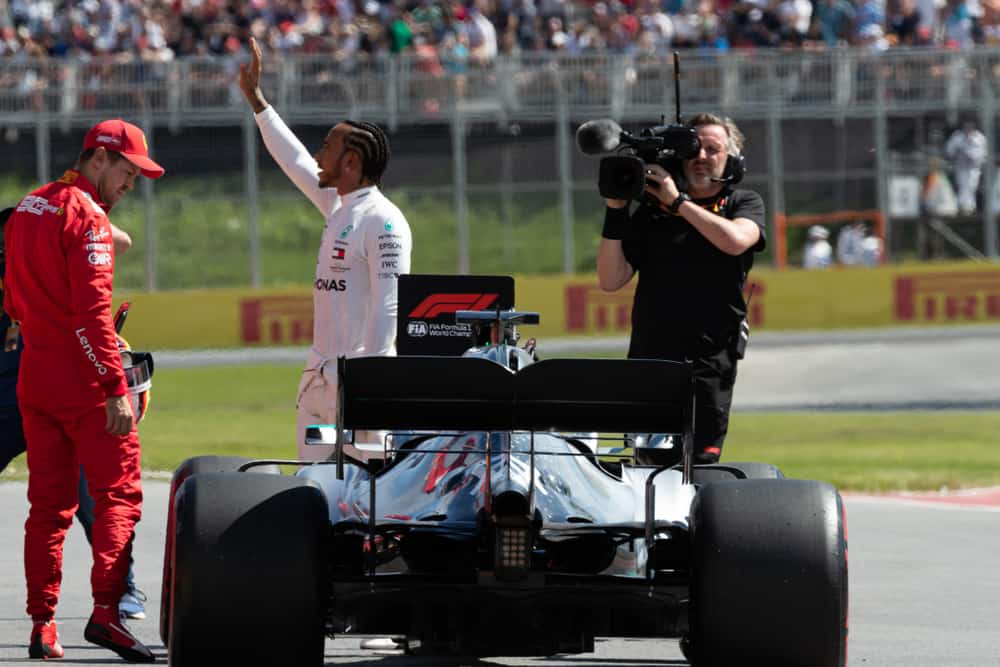
A Typical Formula One Weekend
The week before the Grand Prix is full and involves a large, well-coordinated series of events from the FIA, the teams, and the racing circuit owners.
Transporting The Cars
Teams have to transport two high-value racing cars and over 200 tons of equipment and spare parts to the racing tracks before the event.
Every item the team needs on the track, from the team’s pit wall assembly, team banners, and spare engines down to the smallest nut, must be carefully packed and tracked into pallets and sent to the tracks.
Some teams send part of the cargo by air and part by sea if the race is outside Europe.
If the races are held in Europe, the cars and equipment are sent in specially designed articulated trucks.
If the race is on another continent, or it is not practical to transport the cargo by road, DHL makes seven Boeing 747 freighters available for all teams.
Whether the cargo travels by air, sea, or land, it has to be synchronized to arrive at the track on the Monday before the race weekend.
Preparing The Cars
As soon as everything is together at the track, the preparation is started.
Apart from needing to sort through and organize grid trolleys, catering equipment, fridges, cookers, consumable items, tire movers, desks, and chairs, they also have to erect garage paneling, IT equipment, communication infrastructure, and the whole pit wall assembly.
The cars (two cars and a spare chassis) have to be unpacked from the specially designed frames.
After the race is over, hundreds of parts are stripped from the car and returned to the factory for testing.
The car is completely dismantled down to its bare chassis for transport; this includes.
- The engine is removed.
- The gearbox is removed.
- The front wing is removed.
- The rear wings are removed.
- External components like the rear-view mirrors are removed.
- All of the suspension systems are dismantled suspension parts.
Each is transported in its foam fitting box or protected in bubble wrap.
When the car arrives at the track, it is still in this broken-down condition, and the Formula One cars are completely reassembled. They cannot do it haphazardly as the engineers must maintain incredible fine tolerances.
The cars have to be ready for action in under four days.
The Thursday Before The Race
The senior team management members and the drivers arrive in the city holding the event starting the Tuesday before the race.
The date of arrival will be informed by the publicity activities the individuals are booked for during the week.
On Thursday, the drivers meet at the track and carry out the task they probably dislike the most: the formal press briefings.
After the pandemic, drivers are now interviewed in pairs.
The drivers then hold formal briefings with the teams where the car setup is agreed upon and the strategies the teams and drivers will employ during the weekend.
The drivers will conduct a track walk, look for new bumps, cambers, and braking marks, and check the curbs to see which to attack and which to stay away from.
Conclusion
Formula One has maintained and even increased its popularity when almost all other racing series have seen a decline. There are several reasons for this, not the least of which is how qualifying for the main race works.
The six sessions, which culminate in the final Q3 (or sprint race) session, are kept interesting and exciting.
References
- https://www.motorsport.com/f1/news/insiders-guide-how-an-f1-race-weekend-works/6744616/
- https://www.mercedesamgf1.com/en/news/2018/09/insight-what-happens-to-f1-car-parts-after-a-race/
- https://flowracers.com/blog/how-f1-qualifying-works/
- https://www.formula1.com/en/latest/article.everything-you-need-to-know-about-f1s-new-sprint-qualifying-format-including.1Lawf6r6Ab0y8ha0satSjx.html
- https://www.redbullracing.com/int-en/bulls-guide-to-qualifying
- https://www.radiotimes.com/tv/sport/formula-1/sprint-qualifying-f1-rules/

